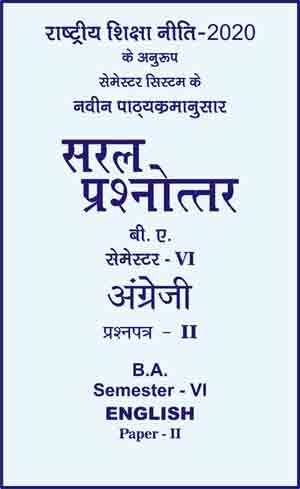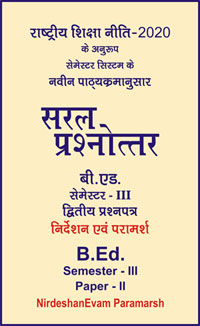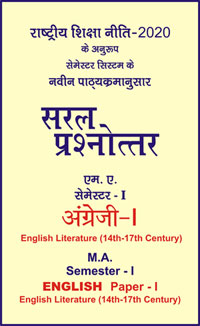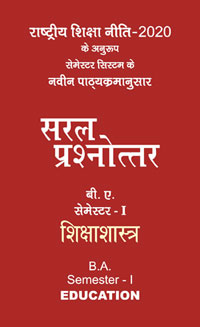|
बी ए - एम ए >> बीए सेमेस्टर 6 अंग्रेजी पेपर 2 बीए सेमेस्टर 6 अंग्रेजी पेपर 2सरल प्रश्नोत्तर समूह
|
|
||||||
बीए सेमेस्टर 6 अंग्रेजी पेपर 2
Chapter 4 - Misinformation and Disinformation
Introduction to the Chapter
In the age of digital media, journalism stands at a critical crossroads, confronted by the twin challenges of misinformation and disinformation. These phenomena, while not new, have gained unprecedented momentum in the digital era, profoundly impacting public discourse and trust in media. Misinformation, defined as the unintentional spread of false information, and disinformation, the deliberate creation and dissemination of falsehoods, pose unique and significant challenges to the field of journalism.
The ubiquity of social media and the internet has revolutionized how information is created, shared, and consumed. This digital transformation has democratized content creation, allowing anyone with internet access to broadcast information to a global audience. However, this has also led to the proliferation of inaccurate or misleading content, often spread with bewildering speed and scale.
For journalists, this environment presents a formidable landscape. On one hand, they must navigate through a vast sea of information, distinguishing fact from fiction, while on the other, they face the risk of being instrumentalized by purveyors of disinformation. The stakes are high, as the integrity of journalism is fundamental to informed public discourse and the functioning of a healthy democracy.
Moreover, the challenge is not just about identifying and correcting false information. It extends to maintaining public trust in an era where the line between fact and fabrication is increasingly blurred. The rise of ‘fake news’ has not only become a tool for disinformation campaigns but also a label used to discredit legitimate journalism. This scenario poses a threat to the very essence of journalistic integrity and the role of the press as a watchdog and a reliable informant to the public.
As misinformation and disinformation continue to evolve, journalists and media organizations are compelled to adapt and innovate. They are tasked with developing effective strategies to counter these challenges while upholding ethical standards and ensuring the right to freedom of expression. The way forward involves a multifaceted approach, encompassing rigorous fact-checking, enhancing media literacy, embracing technological tools, and reinforcing the principles of ethical journalism.
In this context, the role of journalism transcends mere reporting; it becomes a crucial bulwark against the tide of misinformation and disinformation. How journalists and media entities navigate this landscape will significantly shape the future of public discourse, the preservation of truth, and the resilience of democratic societies against the corrosive effects of falsehoods.
Introduction
In the realm of journalism and media, misinformation and disinformation represent significant challenges. While both involve the spread of false information, they differ in intent : misinformation is spread without intent to deceive, whereas disinformation is deliberately misleading. Their impact on society is profound, influencing public opinion, shaping political discourse, and even affecting public health. Combatting these phenomena requires a multifaceted approach, balancing the need for free expression with the necessity of reliable information.
The Impact on Society
- Public Misinformation : Misinformation can lead to public confusion, especially in critical areas like health, politics, and science. The spread of inaccurate health information during the COVID-19 pandemic is a prime example.
-
Political Disinformation : Disinformation campaigns can influence elections, polarize debates, and undermine trust in democratic institutions. The use of disinformation in political contexts often aims to manipulate public opinion or discredit opponents.
-
Social Consequences : Both misinformation and disinformation can lead to social unrest, mistrust in media, and the weakening of societal cohesion.
Challenges in Journalism
-
Rapid Information Spread : The speed at which information spreads on digital platforms makes it challenging for journalists to verify facts before they go viral.
-
Sophisticated Disinformation : Advanced technology, including deep fakes and AI-generated content, has made disinformation more sophisticated and harder to detect.
-
Economic Pressures : In the digital age, media outlets face economic pressures that can compromise journalistic standards, inadvertently promoting sensational or unverified content.
-
Polarization and Bias : Political and ideological biases can influence how information is presented, leading to selective reporting or unequal scrutiny of different news sources.
Strategies for Combating Misinformation and Disinformation
-
Fact-Checking Initiatives : Many news organizations have established dedicated fact-checking teams to verify information, especially during major news events or election cycles.
-
Media Literacy Programs : Educating the public on how to critically assess news sources and understand media bias helps in building resilience against misinformation.
-
Collaboration with Tech Companies : Partnerships between media and technology companies are crucial for identifying and mitigating the spread of false information on social platforms.
-
Regulatory Approaches : Governments and regulatory bodies are exploring ways to hold platforms accountable without impinging on free speech. This includes legislation targeting the deliberate spread of disinformation.
-
Journalistic Ethics Reinforcement : Upholding and reinforcing journalistic ethics and standards is essential for restoring public trust in media.
Challenges in Combatting Misinformation and Disinformation
- Balancing Free Speech and Censorship : Finding the right balance between combating false information and protecting freedom of expression is a delicate task.
-
Global Scope and Jurisdictional Limitations : Misinformation and disinformation are global issues, but legal and regulatory measures are often confined by national boundaries.
-
Rapidly Evolving Technology : The continuous evolution of technology means that strategies for detecting and countering false information need constant updating.
-
Diverse Sources and Channels : Misinformation and disinformation can originate from a multitude of sources and spread through various channels, complicating detection and response efforts.
Conclusion
Misinformation and disinformation in journalism and media present complex challenges that require a coordinated and dynamic approach. Strategies to combat these issues involve not only technological solutions and regulatory frameworks but also a strong emphasis on media literacy and ethical journalism. The goal is to create an informed society where quality journalism thrives, and the public is equipped to critically assess and engage with the information they encounter. As the landscape of media continues to evolve, so too must the strategies to maintain the integrity and trustworthiness of information in society.
|
|||||

 i
i 









